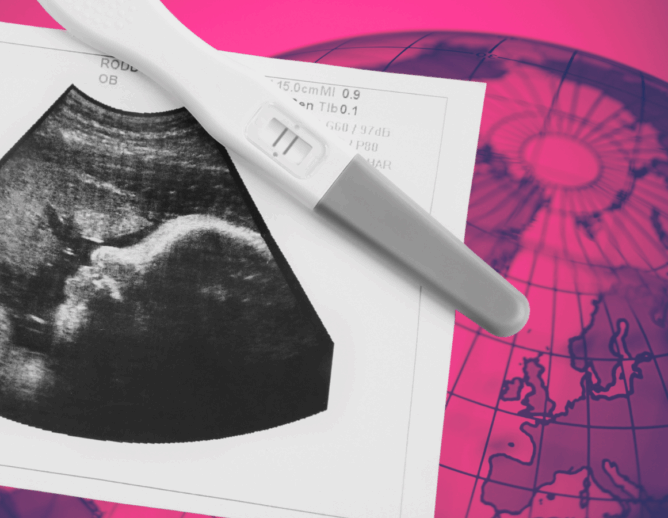Introduction
Over the past decade, Black and Hispanic populations have struggled with disparate HIV case rates. In 2021, the Black population accounted for 40% of new HIV cases, with the Hispanic population not far behind at 29% of new HIV cases. These percentages are astronomical when compared to how little these communities make up the American population — with the Black and Hispanic populations representing 13.6% and 19.1%, respectively, of the total population of the United States.
Even more concerning is the prevalence of HIV in the South — which has large populations of both Black and Hispanic people and accounts for 52% of HIV diagnoses and 45% of persons living with diagnosed HIV infection as of 2017. These numbers are staggering, as only about 38% of the U.S. population lives in this region.
Furthermore, approximately 50% of all undiagnosed HIV infections during 2010–2016 occurred in the South. Nonmetropolitan areas in the South have disproportionately high HIV incidence and prevalence compared to nonmetropolitan areas in other regions of the country. Unfortunately, much of the HIV transmission in the South is from approximately 81,900 people who are undiagnosed with HIV, who, in combination with the diagnosed but untreated persons, likely contribute to over 80% of all new infections in the region.
Background
I. History of the Southern Population
The Black population is highly concentrated in counties in the South. This is not by accident; instead, this was part of a movement known as the “New Great Migration” — the opposite of the “Great Migration,” which occurred in the early part of the last century. During this period, millions of Black Americans moved out of the South and into other parts of the country, such as major metropolitan areas in the North, in search of better work opportunities and less oppression than they faced in the Jim Crow South. The “Great Migration” saw the South retaining only a little over half the Black population by the mid-20th century.
On the other hand, the “New Great Migration” — the flight of Black Americans back to the South — started out slowly in the 1970s and increased by the 1990s. The blue-collar factory jobs that attracted Black workers to move North were dwindling, and the loss of industrialization also had Black residents living in increasingly less advantaged, de facto segregated neighborhoods, resulting in “white flight” to the suburbs. These factors resulted in the loss of employment opportunities and tax bases in these communities.
As the promise of a better life dimmed in the North, Black citizens started leaving. This migration also coincided with new infrastructure, including highways, which facilitated travel and burgeoning business opportunities in the South. However, this “New Great Migration” did not happen overnight. While complex in origin, the reasons for this migration were led by predominantly younger, college-educated Black Americans from the North and the West of the United States. These college-educated African Americans led a revitalization of the South, which has grown to be known as the “New South.”
The states that benefited the most from this revitalization are Georgia, North Carolina, and Texas, especially their metropolitan areas, including Atlanta, Dallas, and Houston. Even though there is a growth of white and immigrant communities in these areas, the Black “New Great Migration” has served to keep Black Americans as the majority group in many parts of the South.
II. Southern Politics and Health
The South’s distinct political landscape affects the population’s health, which, unfortunately, has a disparate impact on their Black and Hispanic populations. Understanding the South’s political and population history is key to understanding the current issues of poverty, lack of health care providers, stigma, lack of insurance or Medicaid expansion, and struggles with transportation that all affect the region.
The South has long been plagued by extreme racism, slavery, discrimination, and modern-day slavery in the form of prison labor, as well as a “long history of opposing efforts to provide government-sponsored health care for their constituents.” This history has always been deeply rooted in racism.
Weeks after World War II ended, President Harry S. Truman proposed a universal health care plan to Congress, which would have ensured that every working American could receive comprehensive insurance coverage. The plan would have been financed sustainably and equitably while prioritizing preventive health care, allowing those covered to choose their doctors, and incentivizing doctors to practice in rural and low-income areas. Southern Democrats in Congress killed Truman’s proposal due to fear that they would have to integrate hospitals.
Paul Krugman, an economist and Nobel laureate, criticized Southern politicians’ underlying reasoning to oppose Truman’s health plan. In his book, “The Conscience of a Liberal,” he reflected, “Keeping Black people out of white hospitals was more important to Southern politicians than providing poor whites with the means to get medical treatment.”
This thought process has not changed much over the decades, as evidenced by the expansion of Medicaid. Of the states that have not expanded Medicaid, 8 of 11 are from the South. Politicians have strategically used the term “Obamacare” instead of “Medicaid Expansion” to link the health plan to a Democratic president. This divisive tactic is used to push non-Black and non-Democrat southerners away from understanding the actual provisions of the law. When people in the region are told the health policy without knowing the description is, in fact, that of “Obamacare,” people are typically in favor of expanding Medicaid in their state.
Cutting through the divisive rhetoric around the health plans is critical to helping people understand that Medicaid expansion will help anyone, regardless of race, if they earn up to 138% of the federal poverty level. Unfortunately, Southern legislators have repeatedly utilized this rhetoric to undermine their constituents’ access to health care without actually articulating any legitimate legislative or implementation issues with the program. This amounts to the same reason that the Truman health care plan failed. Racism and white supremacy ultimately affect everyone, not just the intended populations.
Societal Factors and Their Impacts
I. Poverty
Poverty is a major contributing factor to the high representation of Black and Hispanic Southerners among new cases of HIV. Due to historic and continuing economic inequality, poverty has disproportionately impacted Black and Hispanic people. Compared to the other regions in the United States, the South has the highest poverty rate and the lowest median household income. These factors have been associated with lower health literacy and poorer health outcomes and may have also contributed to the higher HIV numbers in the South. Additionally, other macroeconomic and social contextual factors, such as neighborhood poverty, discrimination, and mass incarceration of Black men, contribute to the spread of HIV among African Americans.
II. Lack of Access to Transportation
Many of the people in the South who have or are at risk of contracting HIV live in rural areas, which poses its own challenges. Due to these rural areas and poverty, access to transportation is difficult, which is then exacerbated by poor public transportation systems in the rural South. These factors lead to challenges in accessing consistent HIV prevention and treatment services, longer travel times to access care, and significantly fewer medical and social services than in metropolitan or suburban areas.
III. Lack of Providers
Further, the South is faced with a dearth of HIV providers and lacks access to quality care. The region also suffers from a shortage of providers specializing in infectious diseases due to a lack of interest in the specialty. This disinterest can often be linked to lower pay, the demand for longer hours, and fewer resources available compared to other specialties. There also seems to be a lack of interest in moving to some parts of the South, as one-third of the infectious diseases fellowship positions in Southern teaching hospitals went unfilled in 2019. Additionally, the South’s health care infrastructure is weak in some areas and offers limited services and treatments. Finally, even in places with services and providers, there is often a lack of trust in those providers among the Black population due to the history between the medical field and Black people.
IV. Stigma
Southern culture also plays a key contributory role in the HIV epidemic in the region. With the Bible Belt existing in the South, religion often contributes to a strong stigma against HIV, which tends to be higher in some LGBTQ+ populations and is often perceived as an LGBTQ+ disease. Some then consider HIV as retribution for being a part of the LGBTQ+ community, which, in turn, further stigmatizes HIV.
These stigmas are pervasive in the South and are linked to not just LGBTQ+ individuals but also to poverty, sex work, and substance use disorder. These stigmas limit people’s willingness to not only disclose their HIV status, but also their willingness to seek testing, care, or preventative services. Research has further shown that stigma has been associated with “lower or delayed access to care due to perceived discrimination from healthcare providers.” These realities can lead to many undetected HIV cases — further exacerbating the high prevalence of HIV in the South.
Please view Part II here, which continues the discussion and concludes the series.
DISCLAIMER: The views and opinions expressed in this piece are those of the author and do not reflect the views of the O’Neill Institute.



